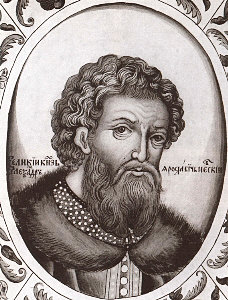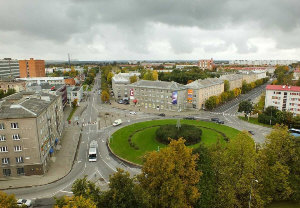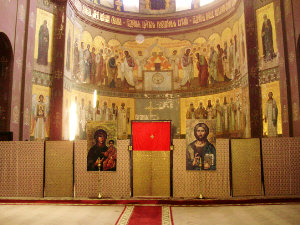Mäetagused vol. 73
Summary
-
First mention of Mitra in the treaty between the Hittite king Šuppiluliuma I and the Mittannian ruler Šattiwaza? A short study into the Indo-Iranian religion
Jaan Lahe
Professor of Biblical Studies, Institute of Theology of the Estonian Evangelical Lutheran Church Associate Professor of Cultural and Religious Studies, Tallinn University, School of Humanities
usundiuurija@gmail.com
Vladimir Sazonov
Research Fellow, Estonian Academy of Security Sciences Senior Research Fellow in Ancient Near Eastern Studies, University of Tartu
vladimir.sazonov@ut.ee
Keywords: gods of treaties, Hittites, Indo-Europeans, Mitra, state of Mitanni, Šattiwaza, treaty, Šuppiluliuma I
In 1907 a treaty was found in the Hittite royal archive in Boğazköy. It was forged between the Hittite king Šuppiluliuma I and the Mitanni king Šatiwaza. Among the deities named in this contract is DINGIR.MEŠ Mi-it-ra-aš-ši-il. This is usually understood to refer to the god Mitra. However, the authors of this article draw attention to the fact that the name occurs in the plural form; the divine classifier DINGIR (“god” before Mitra’s name) is written in the plural form DINGIR.MEŠ, meaning “gods”. They are of the opinion that it should not be understood as a proper name but as a denomination of a group of deities that one could translate as “gods of the treaties”.
-

-
Alexander Nevsky’s hagiology
Enn Ernits
Associate Professor Emeritus Institute of Veterinary Medicine and Animal Sciences Estonian University of Life Sciences
Enn.Ernits@emu.ee
Keywords: hagiology, history, history of religions, Izhorians, Middle Ages, Orthodoxy, Russia, Votes
The article gives an insight into the hagiology (Old Russian житие) of Alexander Nevsky (ca. 1220–1263), Grand Prince of Novgorod and Vladimir. It was probably put down in the 1280s, at the Nativity Monastery in Vladimir, where his body was initially buried and where, in the late 14th century, he was canonised. The hagiology was written by an unknown author. About twenty versions of the hagiology, dating back to the 14th–19th centuries, have been preserved, and all in all, about 500 manuscript texts.
The unknown author did not describe Alexander Nevsky’s entire life but focused on certain details essential for the hagiology, such as the Battle of the Neva, driving out the German invaders from Pskov, the Battle on the Ice, a campaign in the Lithuanian territories, and diplomatic relations with the Golden Horde and Vatican. The ruler is depicted as an ideal hero – a brave commander, a wise politician, and a skilful diplomat. The author has not attempted to show Nevsky as a real person but has rather constructed him as a good Christian, a saint, and a pious man, who believes in Christ and therefore defeats all the enemies of Russia.
The hagiology of Alexander Nevsky is a pathetic work written in the superlative, which, based on the then canons, glorifies the hero, yet includes many inconsistencies and exaggerations. It is especially important to emphasise that the story strongly overestimates the Battle of the Neva (1240) and the Battle on the Ice (1242), which were actually of local importance only. In the description of the Battle of the Neva an interesting detail is an Izhorian called Pelkoinen (in the hagiology Пелгусий) or Pelkoi (Пелгуй). These names are the first recordings of words in Izhorian.
It can be concluded that Alexander Nevsky’s hagiology was a significant religious work in Russian political and church history, which aimed, through overestimating the hero’s deeds, to create and canonise the figure of an ideal ruler, which in turn helped to strengthen Russian statehood and Russians’ national identity.
-

-
Narva wedding sights: The beginnings of the wedding walk tradition
Jelena Nõmm
Lecturer of Russian Culture at Narva College of the University of Tartu
Jelena.Nomm@ut.ee
Olga Burdakova
Associate Professor of Russian Language at Narva College of the University of Tartu
Olga.Burdakova@ut.ee
Keywords: post-folklore, Russian wedding rituals, Narva wedding walk, wedding sights
The present article analyses a wedding walk as a constant element of the modern Russian wedding ritual in the post-Soviet cultural room. The article provides an insight into the history of the establishment of this ceremonial tradition, presents different research versions of the development of the Soviet tradition of newlyweds and guests’ visiting of the wedding sights on the day of the wedding. The objects of Narva wedding train route are in the focus of attention; the formation of this route dates back to the 1960s. During this period the direction of the route of the wedding walk was determined – from the city to the suburb (Narva-Jõesuu). The map of the wedding train route had three destinations: the monument to Lenin in Peter’s Square, the roundabout “Ring” in the city centre and Shishkin’s Pine in Narva-Jõesuu. The last two of the above-listed objects are still holding their positions on the map of the modern wedding train route as well. The ceremonial culture and the local mythology are developing around these wedding sights.
-

-
What are the stripes of the Abkhazian flag talking about and what are they silent about? Religious situation in Abkhazia
Aivar Jürgenson
Senior Research Fellow Institute of History, Archaeology, and Art History, School of Humanities Tallinn University
aivarj@tlu.ee
Keywords: Abkhazia, Islam, Orthodoxy, secularity, syncretism
When analysing the religious situation in Abkhazia, the Abkhazian authors present it primarily as a peaceful coexistence of different religions – Christianity, Islam, and native Abkhazian religion. Religions that have existed in Abkhazia side by side for centuries have shaped the worldview of the Abkhazians, which, according to some authors, have a strongly syncretistic shape. Along with syncretism and peaceful coexistence of religions, the Abkhazian authors emphasize the deep Christian roots of Abkhazia: many articles and books show how Christianity reached Abkhazia already in the first century, how it became state religion in the 6th–7th centuries, and how the Abkhazians have dealt with the Christian mission in the Caucasus. Sometimes this emphasis has a political background. When the Georgian-Abkhaz War (1992–93) took place, some Georgian politicians in the confrontation with Abkhazians emphasized the religious aspects of the conflict, and even later tried to present Abkhazia as a Muslim country.
The article looks at Abkhazian religious life in the historical perspective and seeks to find explanations for the religious situation today. It also deals with religious image reproduction: Abkhaz authors’ efforts to get rid of the Islamic image of Abkhazia created by the Georgians. In the Soviet period all religions suffered from anti-religious repressions, mosques and churches of many Christian congregations were closed down, religious rituals were banned and carried out only secretly, and clergymen were repressed. Although after the collapse of the Soviet Union and the war of 1992–93 religious life is allowed again and even favoured by the authorities, the number of eager believers had remained small. Alongside the peaceful coexistence of Islam and Christianity, which is presented by many Abkhaz authors as a good example to be followed by other countries, we also have to speak about formal religiousness and religious secularization.
-
-
Female mountain, masculine mining: An etymological-feminist view on Entbergen in the essay “The Question Concerning Technology”
Ave Mets
Research Fellow, Department of Philosophy University of Tartu, Estonia
avemets@ut.ee
Keywords: history of science, history of technology, Martin Heidegger, scientific-technological metaphysics, worldview
Unconcealment is truth in Heidegger’s Greek-inspired view – the kind of truth that underlies propositional truth (or correctness), as it concerns the entities that propositions are about, and how they come forth to us. This happens in Entbergen or bringing forth. Technology is one way of bringing forth. There are essential differences between the unconcealments of ancient and contemporary technologies. The first, according to Heidegger, went on the concernful way of contemplation, of mutual hearing of the creative being and the matter created of – man helped the being come forth in a way it by itself would not have done, by attending it concernfully. The latter is determined by enframing (Gestell) that is the essence of contemporary science and technology – a forcing of the world into a calculable and manipulable form.
I will give an etymological-ecological-feminist account of the essences of ancient and contemporary technologies as ontogeneses, and of their unconcealments and turning points on the basis of Carolyn Merchant’s ecofeminist tale about mining practices. Those earth-related practices brought forth changes not merely in technologies, but also in mentality in times of commercial revolution and the birth of contemporary science. As she recounts, ancient mining practices were guided by the prevailing view of earth as a living organism, particularly as the mother of all that is growing in and on her, including the ores. Mining was conceived as digging into her womb and entrails to force her fruits out of her – and that was considered immoral and required special care and purity. Commercial revolution brought about a mind-set according to which this forcing of the earth is justified because she as a mean stepmother keeps her fruits so much needed by her children – the humankind.
I understand Merchant’s tale to be about the practices and corresponding attitudes of those times. As language is a practice interwoven in other practices, I consider the etymologies of some related words to hint to the dominant ideas. Thence the words related to earth and world, whereas earth is the dark and concealing, and world is the known and transparent; or ‘berg’ as the saving both for what is inside it such as ores to be mined, and what is behind or on it. This iconically illustrates Heidegger’s unconcealment as Entbergen exclusively used in this essay – ‘bringing out of mountain or salvage’. Many other words used by Heidegger here are closely related to mining and commercial practices. Hence in technological practices, bringing the earth out of salvage became commonplace, and similarly bringing nature out of salvage, or disenchanting it, became the leading idea of the young science’s agenda.
Technological view of the world is of resources to be measured and manipulated. Scientific view of the world is of forces to be calculated and reapplied to take control over nature. Merchant cites early scientists’ ideas of subsuming nature to their power to reveal her secrets (the laws of nature) just like subsuming a woman to a man’s power and shaping her according to his will. Boosting masculinity to the principles of science and deploring femininity parallel the moral decline in man’s relation to earth and nature. Those became mere reserves – Bestand – in man’s disposal, control and calculation, both scientifically and technologically, and thereby in quotidian thinking.
-
-
Paradoxical everyday imaginaries? Realitization, narrative persons and Breaking Bad
Siim Sorokin
Research Fellow (Culture Studies) Institute of Cultural Research University of Tartu
siim.sorokin@ut.ee
Keywords: everyday imaginaries, narratively “tooled” language, narrative person, pragmatics of narrative experientiality, realitization, realmaking, social materialism of narrative, vernacular
The present article elucidates and elaborates on the key theoretical and analytical positions developed in my doctoral dissertation on character engagement, based on the microanalysis of digital storytelling in the online reception of Breaking Bad (Sorokin 2018a). The article (1) gives a general synopsis of the American television series Breaking Bad; (2) provides an analysis of the empirical material in order to illustrate the validity of the theoretical conceptualization; and (3) further teases out the underlying theoretical implications. By design, the theoretical discussion builds on the empirical analysis and focuses, for the purposes of this article, specifically on three core notions and concepts in the previously developed theoretical framework. I use the concept of narrative person to counter the mechanistic, internalist approach to the “fictional character”.
Under my treatment, a narrative person is a sovereign agency by whom the audience is gradually absorbed, as opposed to being absorbed in it. Naturally, such assumptions undermine the universal applicability of internalist models of narrative, in general, and experiential character engagement, in particular. Hence, realitization is envisioned to highlight the discursive practice of “realmaking” in the articulative process of character engagement for the sake of communal discussion. Finally, the concept of co-elaborative creative vernacular indicates communally developed and communicated other-directed distributed sense-making, which is commonsensical and narratively co-elaborated and grounded in everyday language and conceptual thinking which is materialist in character.
News, overviews
-
- 10th Runo Song Conference: Experience shaped into song
The 10th Runo Song Conference, which took place in Tartu on 7–9 November 2018, under the heading “Expressions and Impressions: Personal and Communal Aspects of Traditional Singing”, is reviewed by Taive Särg and Janika Oras.
4th joint seminar of Estonian and Belarussian folklorists in MinskPiret Voolaid gives an overview of the seminar under the heading “Mission Possible: Perspectives of Folklore Research 4”, conducted in Minsk on 27–30 March 2019.
- 10th Runo Song Conference: Experience shaped into song
-
-
- Calendar
A brief summary of the events of Estonian folklorists from December 2018 to March 2019.
- Calendar